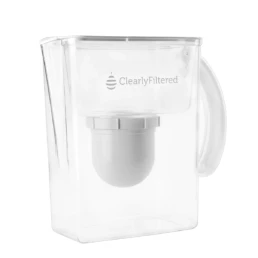When it comes to kidney health, the earlier we can detect changes, the better the chances of preventing long-term damage. Traditional screening tools, such as the estimated glomerular filtration rate (eGFR) and urine albumin-to-creatinine ratio (ACR), are essential but have their limitations. Many patients with early damage still show “normal” results on these tests. That’s where urinary citrate comes into focus. Emerging research suggests that urinary citrate could serve as a sensitive biomarker for identifying early kidney stress, even before common lab values change.
By Majd Isreb, MD, FACP, FASN, IFMCP
What Is Urinary Citrate?
Citrate is a natural substance filtered by the kidneys and reabsorbed in the proximal tubules. It helps neutralize acid in the body and prevents kidney stone formation by binding calcium in the urine. The amount of citrate that appears in the urine reflects both kidney tubular function and the body’s acid-base balance.
When the kidneys are under stress, such as in the early stages of chronic kidney disease (CKD), urinary citrate levels often fall. This decrease occurs even before blood tests indicate metabolic acidosis, making it a potential early indicator of kidney dysfunction.
Urinary Citrate and Early Acid Retention
A key insight from recent studies is that urinary citrate can reveal subclinical acid retention, a state where the body holds on to acid despite normal blood bicarbonate levels. Patients in CKD stage 1 or 2 may still look “normal” on standard labs, but their citrate is already reduced. Detecting this hidden acid burden early provides an opportunity for timely intervention.
How Urinary Citrate Is Measured
There are two main ways to measure it:
-
24-hour urine collection: The gold standard, often used in kidney stone evaluation.
-
Spot urine citrate/creatinine ratio: A simpler test that adjusts for urine concentration and provides practical insights in the clinic.
For interpretation, labs typically report results in mmol citrate per mmol creatinine or in mg citrate per g creatinine. While exact cutoffs vary, values below ~0.1 mmol/mmol (about 100 mg/g creatinine) are often considered low and may warrant further evaluation.
Why Low Urinary Citrate Matters
Low level of citrate in the urine is more than a number on a lab report; it reflects processes that can drive CKD progression:
-
Acid retention: Triggers hormonal changes (RAAS, endothelin) and tubular injury.
-
Fibrosis risk: Chronic acid stress accelerates scarring in kidney tissue.
-
Nutritional insight: Low values may reflect high dietary acid load (e.g., excess animal protein, low fruits and vegetables).
- Stone formation: Hypocitraturia increases calcium stone risk, linking early CKD and nephrolithiasis.
Interventions That Can Help
The most promising aspect of urinary citrate is that it’s modifiable:
-
Dietary alkali: A diet rich in vegetables, fruits, and plant-based foods raises urinary citrate and reduces acid load.
-
Oral bicarbonate or citrate: In selected patients, bicarbonate therapy improves acid-base balance and increases urinary citrate. In addition, supplements that contain citrate, such as KitoCitra or potassium citrate, improve it.
-
Lifestyle tracking: Monitoring spot urinary citrate/creatinine over time can help track the impact of diet and therapy, much like ACR does for proteinuria.
Complementing Traditional Kidney Tests
Urinary citrate isn’t meant to replace eGFR or ACR, but rather to complement them. Together, they give a fuller picture:
-
eGFR tracks filtration capacity.
-
ACR tracks glomerular injury.
-
Urinary citrate highlights acid retention and tubular stress.
By integrating these markers, clinicians can spot early CKD changes that otherwise slip through the cracks.
The Bottom Line
Urinary citrate offers a promising new lens for understanding kidney health. By identifying acid retention and tubular stress before blood tests reveal abnormalities, it could open the door for earlier dietary and lifestyle interventions. For patients at risk—such as those with diabetes, hypertension, or a history of kidney stones—this simple urine test may provide a valuable tool in keeping kidneys healthier for longer.










